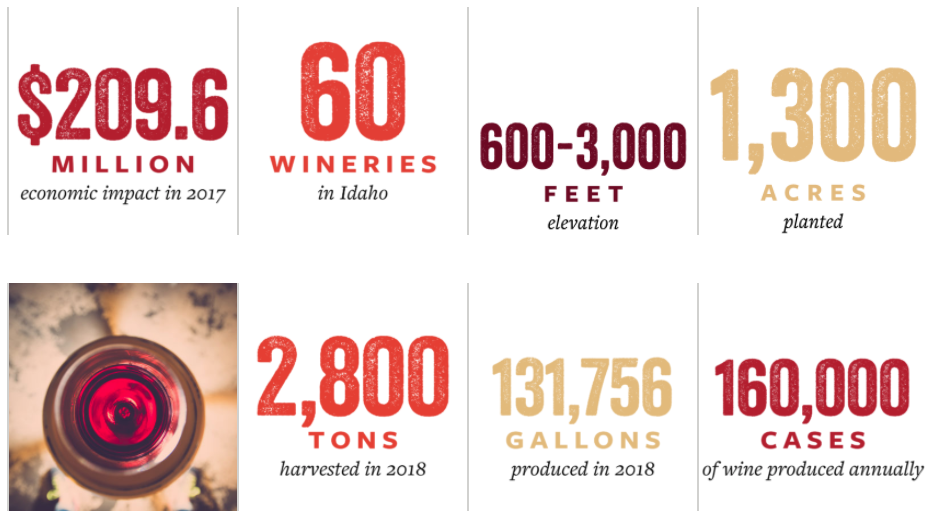(image from idahowines.org)
To date, there are over 60 wineries and cideries in the state of Iowa. For reference, there are over 400 wineries in Napa alone. So what does that mean? In Napa, over 400 businesses are vying for your attention in a small – very small actually – land space, where the terroir variances are subtle from one vineyard to the next when looked at alongside each other (or some wineries are sourcing from the same vineyard as another, lessening the degrees of variance from one winery to the next). However in Idaho, there is more room to stretch out, more room to breathe. Therefore terroir expressions have much more variance, variety, and excitement, even within a single wineries location holdings in different AVAs and the subsequent bottlings. Looking at that back through the Napa lens: no Napa winery is going to “waste time” bottling a Mendocino or Lake County appellation wine, they would only maybe offer a Sonoma offering, and that is a very strong “maybe” – a single winery in Idaho could showcase wines from multiple AVAs with no issue while you get to literally enjoy the fruits of the land in a single place.
Planted elevations range from roughly 600-3,000 ft. above sea level. It is no surprise that high-elevation fruit is sought the world over. Better exposure, better drainage, higher diurnal temperature swings…really the list goes on. Idaho has all of that to offer, just the same as CA, OR, and WA does.
Roughly 1300 acres (~526 hectares) are planted in the state currently and that number continues to grow. This statistic shows how very new the wine opportunities are in Idaho. For reference, the Monterey AVA and the Paso Robles AVA both have roughly 40,000 acres planted. As we’ve stated before, there are so many exciting microclimates, soils, and terroir expressions yet to be explored in the western half of Idaho, and this shows it in raw numbers.
Harvested tons of grapes doesn’t translate well for the average Joe or Jane, so we’re here to help. In 2018 Idaho harvested 2,800 tons of grapes. If all those grapes became wine, that’s roughly 189,000 cases of wine, or roughly 2.27 million bottles of wine. That’s a lot of wine when you take a second to soak it all in. However…
Not all harvested grapes become wines. Some become jams and jellies, some juice (of the non-adult variety). Regarding production, in 2018 just under 132,000 gallons were produced into wine, or 54,875 cases. That’s roughly 658,500 bottles of wine in 2018 alone (a lower yielding year, annually 160,000 cases are generally produced). Still quite a bit of wine considering.
Cheers Idaho!

